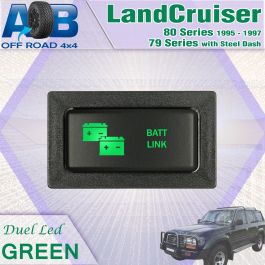Fj80oregon
GOLD Star
Thanks for the help 2 years to late!!!!I am also going to add this here just to help people researching dual batteries, kits, etc. Sorry @Fj80oregon I am not trying to pick apart your install, but I have had numerous conversations with people about what type of auxiliary battery to buy, and I can use your picture as an example. I always recommend that people spec in a battery from a 91-92 as the terminals are mirrored from the DS of the later models. This keeps the positive terminal more inboard and further from the underside of the hood. It also makes the cabling a bit cleaner and will mimic more like what Toyota intended. If you were to use the same size battery that comes with the rig, the drivers side would fit a Group 24F and the passenger side tray would get a Group 24. Same batteries, just different post orientation.
In the example below, this is the same post orientation as the drivers side. Ideally, it would be opposite of what is shown here.
View attachment 2999469

All in fun don’t get mad!
Your kit is still working great even though I installed some stuff my way! It’s amazing I even accomplished this I can barely get my shoes on the right foot. The ACR unlatching still catches me off guard sometime with that loud CLICk!

